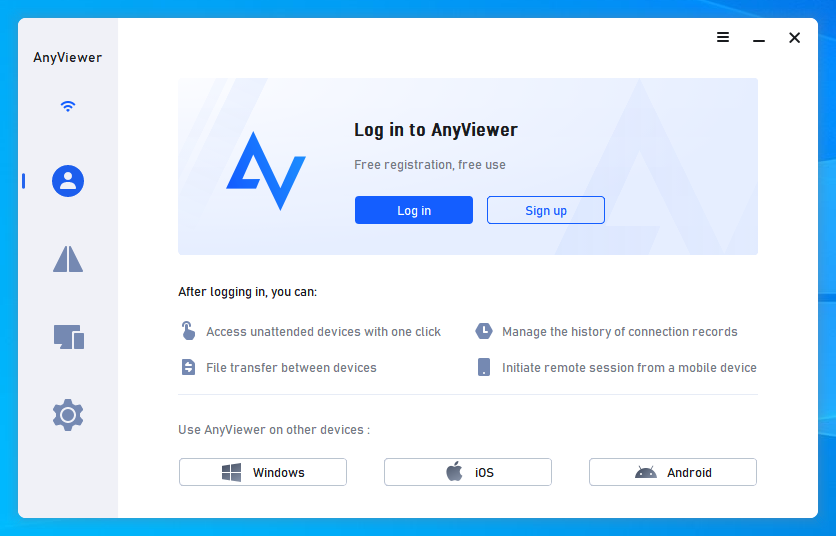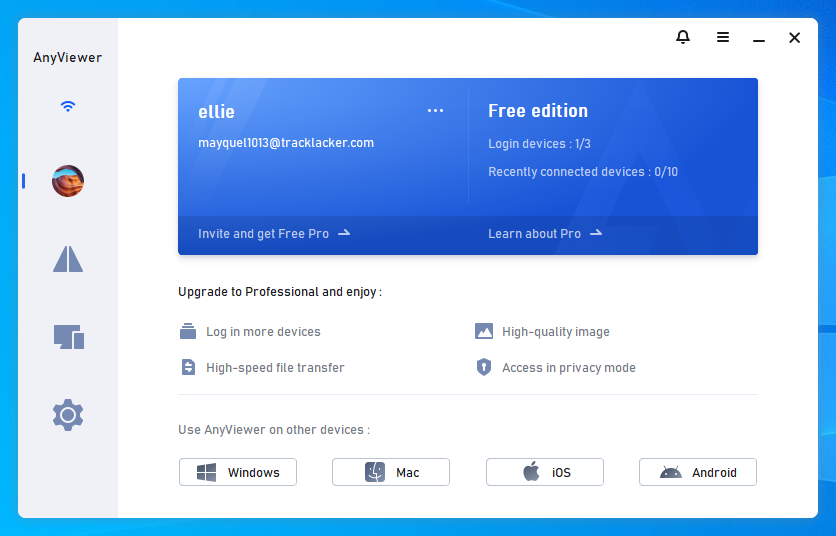In this post, an explanation of RDP Wrapper will be provided, along with a list of four free RDP Wrapper alternatives for establishing remote connections between computers.
Users of RDP are likely to be familiar with RDP Wrapper. Between the Service Control Manager and Terminal Services, the RDP Wrapper acts as a layer. Alternatively, it might be compared to a pipe that connects Service Control Manager and Terminal Services. It supports a Remote Desktop Host and multiple RDP sessions. Rather than altering termsrv.dll, the original termsrv.dll file is left alone.
However, the security and legality of RDP Wrapper are concerns of many users.
Those two drawbacks depress the users a lot and enable them to seek RDP Wrapper legal alternatives.
In this section, you'll discover four free, secure, and legitimate alternatives to RDP Wrapper. Follow the guide to explore these options and enhance your experience.
Secure remote desktop software is essential for bolstering your security against potential threats. These specialized tools easily integrate with your systems and come equipped with their security features. Among the various options available, AnyViewer, a free and highly secure remote desktop software, is a top choice for robust protection.
AnyViewer distinguishes itself and stands as the best alternative to RDP Wrapper with a range of robust safety measures, ensuring secure remote desktop experiences:
Step 1. Download and install AnyViewer. Go to Log in, and then click Sign up.

Step 2. Fill in the signup information. Then you can see you successfully logged in to AnyViewer. Your device will automatically be assigned to the account you've logged in to.

Step 4. Log in to the same AnyViewer account on the two devices, then you can achieve a direct connection by clicking One-click control.
✍ Note: To access the remote computer in privacy mode, you need to upgrade to an advanced plan. After that, you can enjoy many other rights, including controlling more computers from one computer, enjoying high-quality images, etc.
Pros:
Cons:
Chrome Remote Desktop, a free remote access tool, is usually shown as a Chrome extension, which can be used on a PC or iPhone to access or control another PC from different operating systems. And for the security of Chrome Remote Desktop, we have to say that it’s sufficiently safe.
During the remote session with it, all data will be sent directly from the client to the host. It adopts an encrypted combination protocol and AES encryption algorithm to protect data security. Apart from that, the PIN can be used to safeguard the connection, which is a legal RDP Wrapper alternative. Here are the concrete steps.
Step 1. On the host PC, search for Chrome Remote Desktop. Click on "Remote Access" and then click the blue download button.
Step 2. Follow the steps to install the Chrome Remote Desktop extension. After that, enter a name and click on “Next”.
Step 3. Choose a PIN with at least 6 numbers, and then enter it twice to start the program.
Step 4. On the local PC, open the Chrome browser and navigate here. Then log in to the same Google account. Once logged in, you can see the available computers.
Step 5. Click on the computer set up previously, and enter its PIN. Then you could start your remote control.
Pros:
Cons:
TightVNC is a secure remote desktop tool when used with proper precautions. It offers encryption for data protection, allows for strong password usage, and supports various authentication methods. Ensure your firewall and router configurations restrict access to trusted IPs, and keep the software updated for security. While it's generally secure for most use cases, consider more specialized solutions for highly sensitive data or stringent security requirements.
Part 1. Setting Up TightVNC Server on the Remote Computer
Step 1. Download TightVNC from the official website and run the installer. Choose "Custom" when asked.
Step 2. The installer includes both TightVNC Server and TightVNC Viewer, but for the remote computer, you only need the server. Click the hard drive icon next to TightVNC Viewer to make it unavailable.
Step 3. Click "Next" to continue.
Step 4. Keep the default settings as they are; no need to change anything.
Step 5. Set up two different passwords - one for Remote Access and another as the Administrative Password.
Part 2. Preparing TightVNC Viewer on the Local Computer
Step 1. Download TightVNC from the official website and run the installer, just as you did in the previous step.
Step 2. This time, you need the Viewer Server. To select only the Viewer, click on the icon to the left of TightVNC Server, making it unavailable. Then, click "Next."
Step 3. After installation, open TightVNC Viewer. Enter the remote computer's name or IP address in the "Remote Host" box, and then click "Connect."
Step 4. In the "Vnc Authentication" window that appears, provide the "Password for Remote Access" and click OK to achieve connection.
Pros:
Cons:
TeamViewer is a secure and user-friendly remote desktop tool. It employs strong encryption and authentication methods to protect your data during remote sessions. Regular security updates and the option for multi-factor authentication enhance its safety. Its user-friendly interface makes it accessible for various users, making it a reliable choice for secure remote access.
Step 1. Download and install TeamViewer on both computers.
Step 2. Open TeamViewer and on its main screen, check "Start TeamViewer with Windows" and "Grant easy access."
Step 3. Log in to your TeamViewer account.
Step 4. Once logged in, you'll see that TeamViewer remote access to unattended computers has been enabled on this device. You can access this host without a password through your account.
Step 5. On the local computer, follow the same steps to enable easy access. Then, go to "Computers & Contacts," select your target computer, and click "Remote control using the password."
Pros:
Cons:
In this post, we have a brief introduction to the RDP Wrapper and provide four free, secure, and legal RDP Wrapper alternatives, Chrome Remote Desktop and AnyViewer. If you are looking for a less-limited and more efficient one to remotely access a PC, AnyViewer can be the best choice for you.